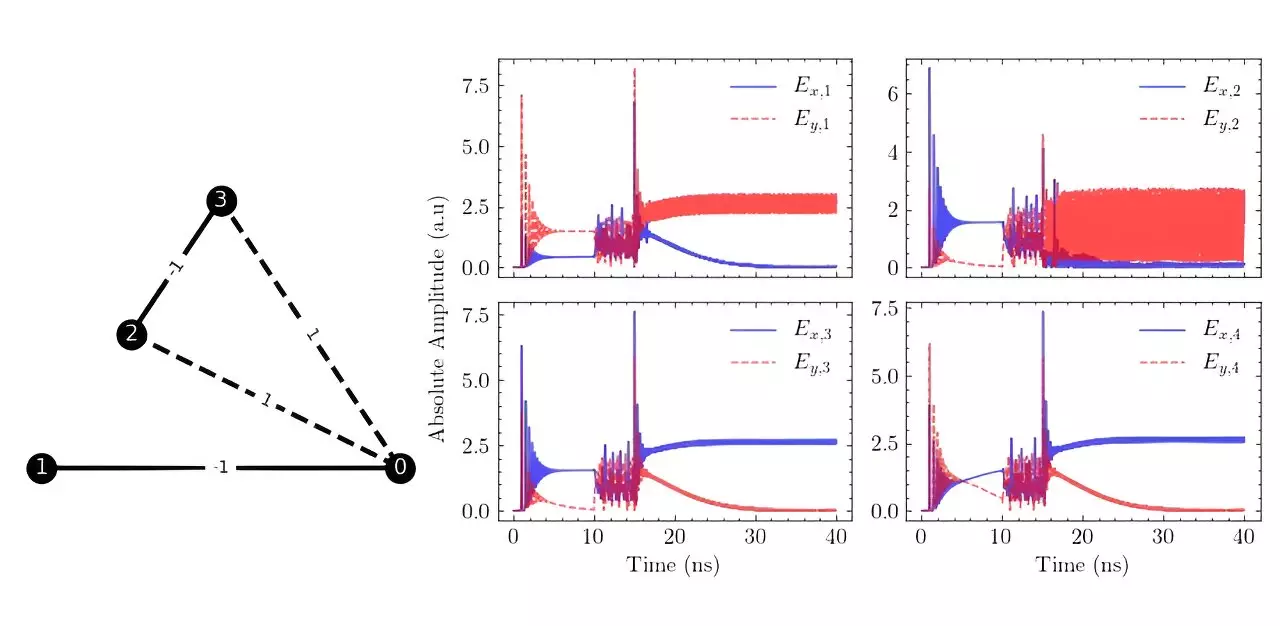In today’s world, the ability to solve complex problems efficiently is more important than ever. Traditional computers often face challenges when dealing with large sets of interacting variables, resulting in inefficiencies like the von Neumann bottleneck. To address this issue, a new approach known as collective state computing has emerged, focusing on solving optimization problems using the Ising problem in magnetism.
The Ising problem involves representing a problem as a graph, with nodes connected by edges. Each node can be in one of two states, either +1 or -1, representing potential solutions. The goal is to find the configuration that minimizes the total energy of the system, based on a concept called the Hamiltonian. Researchers are exploring physical systems that could potentially outperform traditional computers in solving the Ising Hamiltonian efficiently.
One promising approach involves using light-based techniques to encode information into properties such as polarization state, phase, or amplitude. By leveraging effects like interference and optical feedback, these systems can quickly find the correct solution to complex problems. A recent study published in the Journal of Optical Microsystems explored the use of vertical-cavity surface-emitting lasers (VCSELs) to solve Ising problems.
The researchers found promising results when testing their system on 2-, 3-, and 4-bit Ising problems. However, they also identified challenges, such as the need for minimal VCSEL lasing anisotropy, which may be difficult to achieve in practical applications. Despite these challenges, overcoming them could lead to the development of an all-optical VCSEL-based computer architecture capable of solving problems that are currently beyond the reach of traditional computers.
Overall, the emerging field of collective state computing and the use of Ising Hamiltonians in combination with VCSELs show great promise for revolutionizing problem-solving in the future. By harnessing the power of light-based techniques and exploring new ways to overcome existing challenges, researchers are paving the way for more efficient and effective problem-solving strategies in the digital age.



Leave a Reply